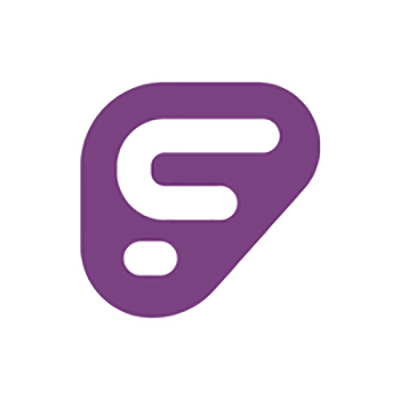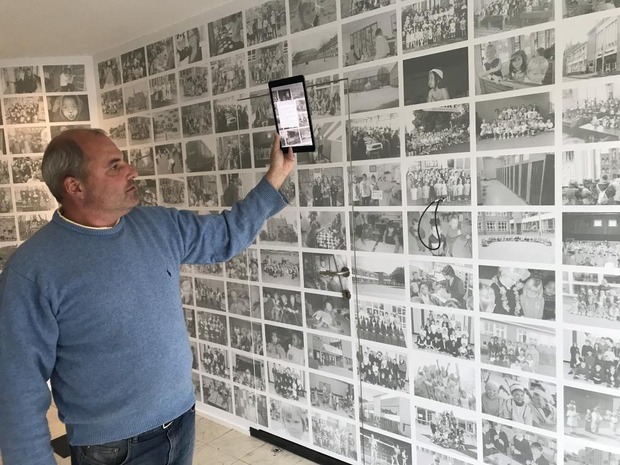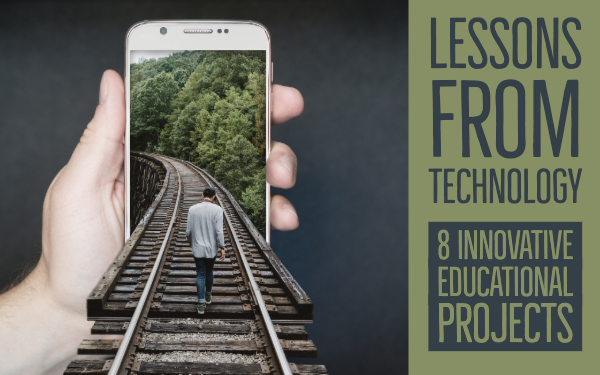Lessons from technology - 8 Innovative educational projects
 Frontline Education & Lucie Renard —
Frontline Education & Lucie Renard —
The new school year is about to start all over the world. In the US, it started the 1st of August, In Europe, most schools start on the 1st of September. Nonetheless, a new school year is always exciting. Schools try to surpass themselves every new school year.
To do that, schools set up schoolwide projects, and teachers try to reinvent themselves using their creativity. Frontline Education reached out to us with the idea of combining amazing stories of schools transforming their processes with technology by setting up innovating projects.
This post will show you 8 educational projects that make excellent use of technology to make both small and big changes. We hope that these ideas inspire you.
Innovative classroom projects
1. The Camera Doesn’t Lie
When we think of innovative technology, terms like artificial intelligence and machine learning certainly come to mind. But teachers at Martin County School District in Florida are enhancing their classrooms with a more ordinary piece of technology — a camera.
“Any serious athlete watches footage of their performances,” April Strong, a former teacher and now instructional coach, told us. “Why not teachers, too?”
April started using video in two ways. First, by watching other experienced teachers who have recorded and shared their teaching videos. Then, by reviewing her own classroom instruction. To get started, she borrowed an iPad from the school’s media center and simply pushed record every single day. The value, she found, was not only in accountability to her craft, but it also brought clarity to her teaching—and still does.
“Video brought clarity to my practice so I could bring the greatest work to my classroom for my students. That’s the power of video. Nobody told me I had to do it. There was no other reason other than it was the perfect time because I was wondering what I truly looked like as a teacher. Video was, and is still, very clarifying. I might be using the most effective strategy ever, but if I don’t actually see it as my students saw it, I’m not growing and I’m not truly clear on if I hit my target. That’s what makes me most passionate about video in the classroom.”
Using video helped shape how April and Martin County School District teachers become the best in their profession. When asked how others should get started, her message was simple: “All you need is your cell phone, and a place to prop it up, and the bravery to literally just push that red button.”
EdTech Hack
 Use video to improve your teaching practice. Use the camera app on your iPad or smartphone and install it somewhere in your classroom, pointed at yourself. Then, hit that play button! Watch the recording and find areas to improve yourself.
Use video to improve your teaching practice. Use the camera app on your iPad or smartphone and install it somewhere in your classroom, pointed at yourself. Then, hit that play button! Watch the recording and find areas to improve yourself.
2. Johnsonville Learning network
Anthony Johnson is a 4th & 5th-grade science and social studies educator. He’s also an Apple Distinguished Educator, TED Innovative Educator, Lego Master Educator, Defined STEM Certified Educator and Rowan-Salisbury Schools Teacher of the Year for 2016-17. AND the mayor of Johnsonville, his classroom.
Anthony’s classroom, called Johnsonville, focuses on three main elements: collaboration, critical thinking, and citizenship. Anthony’s goal is to inspire a love for learning. Johnsonville is a very busy place that encourages hands-on learning and uses interesting projects to teach students everything about science and social studies.
He uses “Hotweels” to teach students the basics of physics like Newton’s third law, “Spheros”, “Lego” and drones to teach them about forces and motion, and a 3D printer to teach them about the human body. Check out how he does this right here:
EdTech Hack
 Use technology to create the best learning environment. Use, for example, Sphero to teach your students about coding, forces, and motion.
Use technology to create the best learning environment. Use, for example, Sphero to teach your students about coding, forces, and motion.
Innovative school-wide projects
3. AR School wall
Augmented Reality is an excellent tool to plan an interactive learning walk in your school to show (new) parents around. Only recently, principal Joost Dendooven of the Mozaiek primary school in Belgium renovated his school’s hallway with a new eye-catcher: a photo wall.
The school selected more than 400 photos out of the school’s archive and placed them on the wall. Then, the school added an augmented reality effect to the photos on the wall using the HP Reveal app. In order to add augmented reality effects to the photo wall, the school looked for interesting newspaper articles and fun videos about their school activities.
When parents or other visitors enter the hallway, they get an iPad or iPhone with the installed AR-app. All they have to do is scan a particular photo on the photo wall with their device and the image will come to life with some background information, a newspaper article or a video.
Even around the school and on the playground, they added AR-effects with videos and explanations of school activities that took place.

EdTech Hack
 Use technology to present your school. Use HP Reveal to add augmented reality effects to images when you hover over them with the app. AR effects can be articles, images, videos and more.
Use technology to present your school. Use HP Reveal to add augmented reality effects to images when you hover over them with the app. AR effects can be articles, images, videos and more.
4. Cutting Edge Rural
Forty-five miles west of Columbus, Ohio sits Graham Local Schools in rural Champagne County. Three buildings make up the entire school district: one elementary building, a middle school, and a high school. Rolling hills and fertile farmland are abundant in this section of Ohio, access to professional development and neighboring resources, however, are not. So when then-superintendent Dr. Kirk Koennecke began his role, his challenge was making sure teachers had opportunities to grow while balancing budgeting needs and the reality of how far a district can send their teachers for those opportunities.
That’s where technology and innovative thinking came in.
Like many rural districts, it’s not always easy for Graham Local Schools to access in-person professional development, so they began using a blended learning model, allowing remote teachers to learn on their own time, in the way that works best for them.
“We’ve really tried to become more progressive and personalize a model of professional learning at Graham where teachers get to choose from a menu of opportunities, most of which are led by our own staff.”
Dr. Koennecke utilized personalized learning pathways, where teachers can choose an area of development, allowing them to feel a greater connection to their educational journey. He wanted to empower his teachers and even started encouraging them to meet students and professionals where they are — on any platform.
“The last thing that we did is, we’ve tried to push social media use with our teachers. While we don’t require it, I’m very proud of the way the use of Twitter and Facebook and Instagram have grown in our district to try to meet people where they are, especially now students. Our Instagram accounts are growing and growing because we’re trying to push information to students. But Twitter is a way that all of our leaders and many of our teachers not only share and celebrate information in each other, but also learn.”
EdTech Hack
 Use Social Media for professional learning. Twitter offers information, resources, and an easy way to connect with other teachers. Use education hashtags to follow different educational topics. Ask questions using the hashtags #PLN and #ProfDev.
Use Social Media for professional learning. Twitter offers information, resources, and an easy way to connect with other teachers. Use education hashtags to follow different educational topics. Ask questions using the hashtags #PLN and #ProfDev.
5. Appy Day
As there are many interesting educational events around the globe, the Primary school “Mozaiek” is worth your visit (if you’re from Belgium of course). Every school that focuses on using technology to optimize a students’ learning outcomes should consider sharing their ideas by organizing an inspirational day for all educators in the environment. It’s very important that other principals and educators learn from each other and step out of their comfort zone. There’s only so much to learn.
Appy Day focuses on practical classroom examples and several “spark”- sessions. 6 Belgian Top teachers share their knowledge of how an iPad can be the lever to a powerful learning environment. Appy Day also teaches visitors how a school can transform digitally in the most efficient way. Maybe your school is next to organize an “Appy Day”.
EdTech Hack
 Use technology to enrich a powerful learning environment. Use an iPad and everything it comes with to create strong learning experiences. The “Everyone can create” iBooks series from Apple Education will definitely spice things up!
Use technology to enrich a powerful learning environment. Use an iPad and everything it comes with to create strong learning experiences. The “Everyone can create” iBooks series from Apple Education will definitely spice things up!
Innovative world-wide school projects
6. The Kakuma Project
Koen Timmers, a top-10 Global teacher award nominee, is the driving force behind the Kakuma Project project. This project, started in 2015, is a group of more than 350 teachers from 75 countries over 6 continents willing to offer free education via Skype. They sent some laptops to the Kakuma Refugee Camp (Kenya), and started to teach via Skype.
Imagine up to 200 students taking a look at one single laptop screen. The teachers teach courses like Maths, Science, English, and Religion to the refugees.
Besides the main goal – to educate refugee students – this project also connects students from all over the world with the refugee students so they get a better understanding of what “living as a refugee” actually means.
EdTech Hack
 Use technology to teach globally. Skype allows you to connect with the world. Connect classrooms from all over the world with each other and teach students about similarities and differences between cultures and personalities. Teach them to empathize with others.
Use technology to teach globally. Skype allows you to connect with the world. Connect classrooms from all over the world with each other and teach students about similarities and differences between cultures and personalities. Teach them to empathize with others.
7. The innovation playlist
First, watch this video that raises an important question: “What is school for?”.
Now, dive into these important questions: To what extent does this video reflect the perspectives of different constituencies in your school community? Would you be willing to ask your students to watch it? Why or why not?
Rather difficult isn’t it? This video is one of the many resources on the innovation playlist, a playlist that wants to encourage educators and principals to change the old fashioned school system for the better. The Innovation Playlist can help your school make a positive and informed change. It represents a teacher-led model, based on small steps leading to big change. It shows you best practices from innovating educators and non-profits from across the US.
EdTech Hack
 Use technology to design your school. The documentary film “Most likely to succeed” explores new approaches that aim to revolutionize education as we know it. It wants to inspire school communities to reimagine what students and teachers are capable of doing.
Use technology to design your school. The documentary film “Most likely to succeed” explores new approaches that aim to revolutionize education as we know it. It wants to inspire school communities to reimagine what students and teachers are capable of doing.
8. Teach SDGs
Teach SDGs stands for teaching Sustainable Development Goals. There are 17 SDG’s, such as “No poverty”, “Clean water and sanitation” or “Life below water”.
Teaching students about these topics and making them aware of these world problems is one thing. Engaging them to step up is another. Students need to look for “solutions” and pitch their idea. They can use social media and other tools to shape their project.
To give you an idea of the impact students can have: A school in Canada used a 3D printer to print coral reefs, a technique to make sure that the real coral reefs don’t fade. Another school found out about mealworms that consume plastic.
During this project, students make videos of what they’ve learned and share them with other schools so they learn from each other across the globe.
EdTech Hack
 Use technology to make the world a better place. Video helps students to spread awareness about the world’s problems. Recording projects and talking about it with others makes students learn from each other. Flipgrid is the perfect app to discuss SDG topics in an educational environment.
Use technology to make the world a better place. Video helps students to spread awareness about the world’s problems. Recording projects and talking about it with others makes students learn from each other. Flipgrid is the perfect app to discuss SDG topics in an educational environment.
Wrap up
Looks like you got some new ideas for the starting new school year. I hope these innovative projects inspired you to think bigger and more creative. Or that they simply gave you some new ideas on how to develop your own teaching skills. If you need more on professional development, this post helps you to get started. And if you’re looking to digitize your lessons, you should try out BookWidgets. 👍


